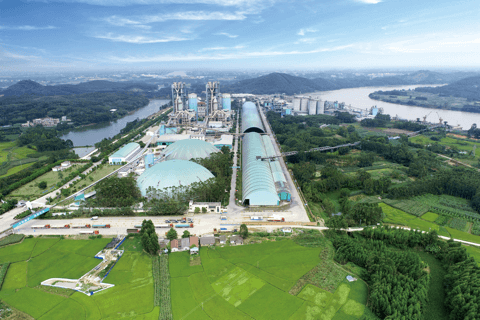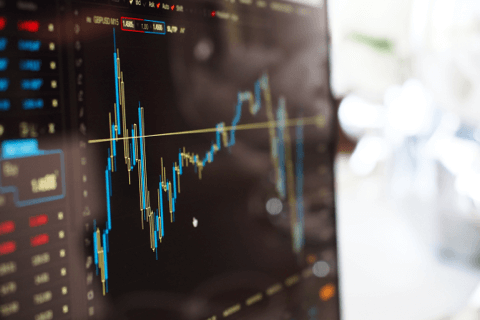- Home
- About Us
-
News
- Company News
- Media Highlights
- Industry Information
- CR Group News
- Business
- Innovation
- IR
- Sustainability
-
Talent Development
- Talent Philosophy
- Talent Training
- Talent Recruitment
(Hong Kong, 9 August 2015) – China Resources Cement Holdings Limited ("China Resources Cement" or the "Company", SEHK stock code: 1313, and together with its subsidiaries, the "Group"), one of the leading cement and concrete producers in Southern China, announced its interim results for the six months ended 30 June 2015 (the "Period").
During the Period, the Company's consolidated turnover was HK$13.4 billion, representing a decrease of 11.6% over the corresponding period last year. Profit attributable to owners of the Company dropped 25.6% to HK$1.53 billion over the corresponding period last year. Basic earnings per share reached HK$0.234. The Board has resolved to declare an interim dividend of HK$0.06 per share for the six months ended 30 June 2015 (30 June 2014: HK$0.07 per share). As at 30 June 2015, the total assets of the Group were HK$56.6 billion, the net gearing ratio was 56.2% and the net assets per share were HK$4.45.
Mr. Zhou Longshan, the Chairman and Executive Director of China Resources Cement, said, "In the first half of 2015, the Chinese government continued to adopt prudent monetary policy and proactive fiscal measures to maintain economic growth within a reasonable range. During the Period, the Chinese government accelerated the approval of infrastructure projects and actively promoted the 'public-private partnership' model, extensively covering industries including water facilities, municipal facilities, transportation facilities, public services and environmental resources, etc. In addition, the People's Bank of China lowered the benchmark interest rates and deposit reserve requirement ratio for three times respectively in order to further reduce corporate financing costs and support the real economy development."
According to the National Bureau of Statistics of China, China's Gross Domestic Products grew at 7.0% to RMB29.7 trillion in the first half of the year. Fixed Asset Investments (excluding rural households) increased by 11.4% over the corresponding period last year to RMB23.7 trillion, of which, infrastructure investment (excluding power supply) was RMB4.1 trillion, representing an increase of 19.1% over the corresponding period last year. As of 30 June 2015, China's M2 money supply amounted to RMB133.3 trillion, representing an increase of 11.8% over the corresponding period last year. In the first half of 2015, Consumer Price Index increased by 1.4% over the corresponding period last year, which was lower than the annual target of 2% set by the government, creating a more flexible condition for the Chinese government to promote policies for stabilizing economic growth.
According to the National Bureau of Statistics, in the first half of 2015, total cement production in China was 1,080 million tons, representing a decrease of 5.3% over the corresponding period last year. During the Period, the cement productions in Guangdong, Guangxi, Fujian, Hainan, Shanxi, Yunnan and Guizhou were 65.6 million tons, 50.2 million tons, 37.4 million tons, 9.8 million tons, 14.6 million tons, 45.5 million tons and 45.5 million tons, representing changes of 0.2%, 2.1%, 4.3%, –2.7%, –26.0%, –4.2% and 1.0% respectively over the corresponding period last year.
The Chinese government continued the strict control policies over new capacity, accelerated the elimination of obsolete capacity, promoted energy saving and emission reduction for the cement industry. The "Emission Standard of Air Pollutants for Cement Industry" has been officially applicable to existing production lines since July 2015, imposing tighter standards on emission of nitrogen oxides and particulate matters. Besides, the revised standard for Common Portland Cement will come into effect on 1 December 2015, and by then PC32.5 grade cement will be completely prohibited. The "Regulatory Requirements for the Cement Industry (2015)" issued in January 2015 emphasized on the principle of "capacity replacement for equal or reduced quantities" and required that newly commenced projects had to co-process solid wastes. In February, cement companies were required to monitor electricity consumption and strictly implement execution procedure for multi-step and differential electricity pricing policies, which will accelerate the exit of obsolete capacities.
Six ministries and commissions including the Ministry of Industry and Information Technology, the Ministry of Housing and Urban-Rural Devepment, National Development and Reform Commission, the Ministry of Science and Technology, the Ministry of Finance and the Ministry of Environmental Protection decided in May to jointly commence and assess the pilot projects for urban waste co-processing by using cement kilns, in order to resolve the overcapacity issue, enforce the transformation and upgrade of the cement industry and promote green development of the industry. Besides, provided that the requirements of the "Emission Standard of Air Pollutants for Cement Industry" are complied with, cement corporations could enjoy 70% value-added tax refund if they sell self-produced 42.5 and above grade cement which contains over 20% industrial wastes. The new tax policy came into effect on 1 July 2015. The Chinese government's strong determination to promote environmental protection and eliminate obsolete capacities will be conducive to sustainable development of the industry in a healthy environment.
During the first half of 2015, the Group's external sale volumes of cement, clinker and concrete were 34.8 million tons, 2.7 million tons and 5.7 million m3, representing an increase of 11.3%, a decrease of 21.6% and a decrease of 22.2% respectively over the corresponding period of 2014. Guangdong and Guangxi remain the Group's core markets, accounting for 41.1% and 28.1% of cement sales of the Group respectively. During the Period, the composite average selling price of cement and clinker products was HK$291 per ton, representing a decrease of 16.4% over the corresponding period last year. The average selling price of concrete was HK$435 per m3, representing an increase of 4.2% over the corresponding period last year, as a higher proportion of sales volume was derived from the Hong Kong market where the price was relatively higher and increases in transportation costs in certain areas in China were transferred to customers. The consolidated gross and 9.5% from other countries). The proportion of the Group's direct coal procurement from coal suppliers was approximately 66%.
Low Inventory Purchases and Strengthening Transportation Control
Coal price continued to slide in 2015. The Group adopted low inventory procurement strategy. Large-scale domestic coal suppliers are used as main procurement channels, while some import coal is appropriately used as supplemental channels to reduce procurement costs. During the Period, the Group purchased 4.43 million tons of coal, representing an increase of 4.7% over the corresponding period last year, of which, approximately 68%, 20% and 12% were sourced from northern China, neighbouring areas of the Group's plants and Australia respectively (in the first half of 2014: 70%, 14%, 6.5%; and 9.5% from other countries). The proportion of the Group's direct coal procurement from coal suppliers was approximately 66%.
As at 30 June 2015, through owning of vessels and tendering for shipping services, the Group has secured 726,000 tons of shipping capacity on the Xijiang River, with annual shipping capacity of about 32.5 million tons. The control of the shipping capacity on the Xijiang River is conducive to control of the Group's logistic costs and protection for stable and sustainable shipping capacity of the Group. In addition, the Group has controlled the operation of 58 silo terminals (mainly located in the Pearl River Delta region of Guangdong) with an annual capacity of 38.7 million tons, enhancing the Group's competitive advantage in terms of logistics and transportation in the Pearl River Delta region and further strengthening the Group's market competitiveness in the region.
Production Safety and Promoting Green Development in the Industry
The Group has continued to actively promote standardization on production safety. Fourteen of the cement production plants of the Group have been accredited the First-Class Enterprise in Production Safety Standardization by the State Administration of Work Safety in China. In addition, all the clinker production lines of the Group have completed technological upgrade on denitrogenation and their emission levels of nitrogen oxides are better than the national standards. As regards dust emission, in order to enhance the stability and efficiency of dust collection, the Group has completed the technological upgrade of dust collection systems by replacing static electricity dust collection systems with bag filter systems. As of 30 June 2015, 30 clinker production lines of the Group were equipped with bag filter systems. The remaining 11 clinker production lines are expected to complete technological upgrade by the end of 2016. Currently, the emission levels of particulate matters for all production plants are in compliance with the national standard. The Group is at a leading position in the industry.
The Group will proactively promote green development, continue to explore and promote the technology of co-processing urban waste, sludge and hazardous waste by using cement kilns. The urban waste co-processing project in the Group's cement plant at Binyang County, Guangxi, which will be the Group's first urban waste co-processing project in operation, is expected to start operation by the end of 2015. The Group's efforts in environmental protection have been recognized by the industry and the general public. These include: China Resources Cement (Pingnan) Limited and China Resources Cement (Tianyang) Limited were awarded the "One Hundred Energy-Saving Model Enterprises" by the China Building Materials Federation among the building materials industry. China Resources Cement (Fengkai) Limited was also awarded the medal and certificate of the "Environmental Protection Model Enterprise of Large-Scale Cement Group in China" by the China Cement Association.
"Full-Scale Production and Sale" to Enlarge Market Share
In 2015, the Group continued to adopt the market competition strategy of "full-scale production and sale". As at 30 June 2015, the annual production capacities of cement, clinker and concrete of the Group through its subsidiaries amounted to 78.3 million tons, 54.8 million tons and 34.5 million m3 respectively. The respective production capacities attributable to the Company according to the Group's share of equity interests in associates and joint ventures of the Group were 11.1 million tons of cement, 7.4 million tons of clinker and 3.4 million m3 of concrete. The Group expects that its annual production capacities of cement, clinker and concrete will amount to 81.3 million tons, 56.3 million tons and 36.4 million m3 respectively by the end of 2015.
Mr. Zhou concluded, "2015 is the year for devising the strategies and layout of the 'Thirteenth Five-Year' plan. The Chinese economic development has entered the new norm. We believe that the Chinese government will maintain the continuity and stability of macro-economic policies to keep a reasonable economic growth. The acceleration of the infrastructure construction, the loosening of real estate policies, as well as the promotion of such new policies as the 'One Belt One Road' initiatives and new-type urbanization etc. will propel the fixed asset investment and to bring a steady and continual demand for the cement industry. Looking ahead, we will persistently adhere to the '3+2' development strategy through control, conversion and distribution of resources, making us the producer with the lowest total cost and leading market position in the region. We will focus on seeking merger and acquisition opportunities in the domestic regions where we have presence, reinforcing our regional market advantages. We will continue to promote lean management for cost reduction and efficiency enhancement, strengthen research and innovation for improving product quality, emphasize on energy saving and emission reduction, impel the urban waste co-processing projects by using cement kilns, promote green development and contribute to the healthy development of the cement industry in China."









